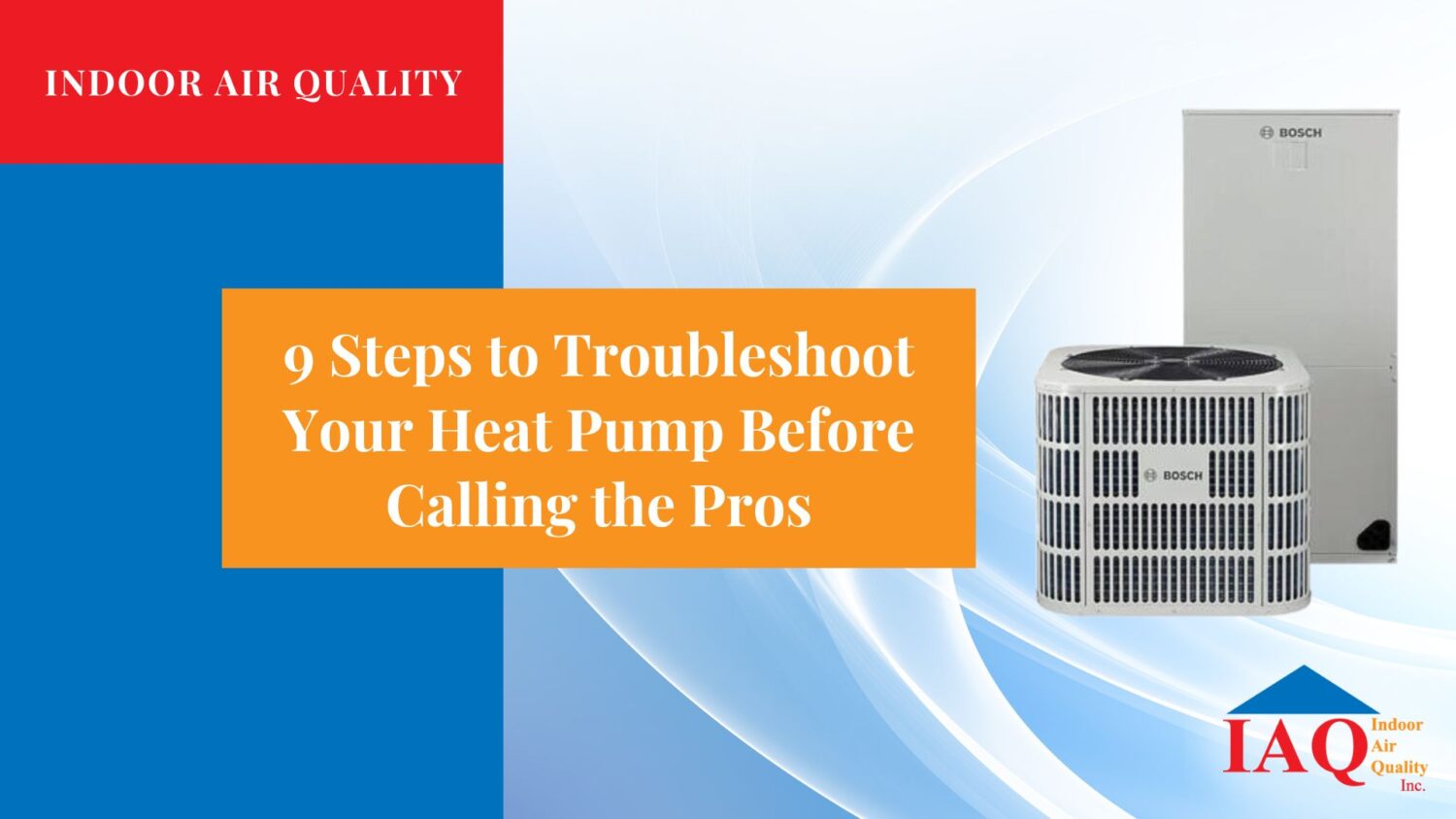Blog
9 Steps to Troubleshoot Your Heat Pump Before Calling the Pros
When your heat pump encounters an issue, it’s not always necessary to call in the pros right away. As your trusted HVAC partner in the Denver Metro area, Indoor Air Quality, Inc. believes in equipping you with the knowledge to perform basic troubleshooting on your heat pumps.
Try these 9 steps before requesting professional service.
1. Check Thermostat Settings
Heat pumps are the heart of home comfort, and the thermostat is the commander-in-chief. Ensure it’s set to the correct mode—either heating or cooling—and the temperature settings are appropriate for the season. This might seem elementary, but sometimes it’s the simple things that are overlooked.
2. Inspect Power Supply
Your heat pump is an electrical device and, as such, requires a consistent power supply. Examine your circuit breaker or fuse box. If you find a tripped breaker, reset it. If it trips again, this could indicate a more serious electrical issue, necessitating professional attention.
3. Evaluate Air Filters
Air filters are your system’s first line of defense against dust and debris. A clogged filter can reduce efficiency and airflow. Make sure to clean or replace them regularly, as per manufacturer recommendations.
4. Clear Around the Outdoor Unit
The outdoor unit requires unobstructed airflow to operate effectively. Remove leaves, snow, or any other debris that could interfere with its operation.
5. Verify Indoor Vents and Registers
Something as straightforward as furniture or drapes blocking the vents can compromise your heat pump’s performance. Check all vents and registers to ensure they are open and unobstructed.
6. Observe the Refrigerant Levels
Refrigerant is the lifeblood of your heat pump, enabling heat transfer. However, it’s best to call the professionals at Indoor Air Quality, Inc. if you suspect a refrigerant leak —indicated by icy build-up on your outdoor unit or a lack of heating or cooling power.
7. Examine the Condensate Drain
Your unit’s efficiency can be hindered by a clogged condensate drain, leading to water leaks and potential system shut-off. Keep the drain clear to avoid water-related problems.
8. Listen for Strange Noises
Strange noises can signal internal problems. If you hear grinding, squealing, or popping, it’s wise to consult with one of our NATE-certified technicians, as these sounds may indicate a need for a professional diagnosis.
9. Power Reset the System
Like a computer, sometimes your heat pump just needs a reboot. Shut off the power, wait for a moment, and then restart the system. This can often clear minor glitches.
When to Call the Pros
If these troubleshooting tips don’t resolve your issue, it’s time to call in the experts. Our NATE-certified team at Indoor Air Quality, Inc. has over 60 years of combined industry experience. We pride ourselves on prompt, thorough service and leaving your home as clean as when we arrived.
Remember, proactive maintenance can prevent many of these issues from arising. For superior service, contact Indoor Air Quality, Inc.—your partner in achieving an energy-efficient, comfortable home all year round.
Interested in more information about heat pumps? Since 2001, Indoor Air Quality, Inc. has provided heating and cooling services to homeowners in the Denver Metro Area (service area). Check out our customer testimonials, contact us, or use our online contact form for more information and a free quote.





